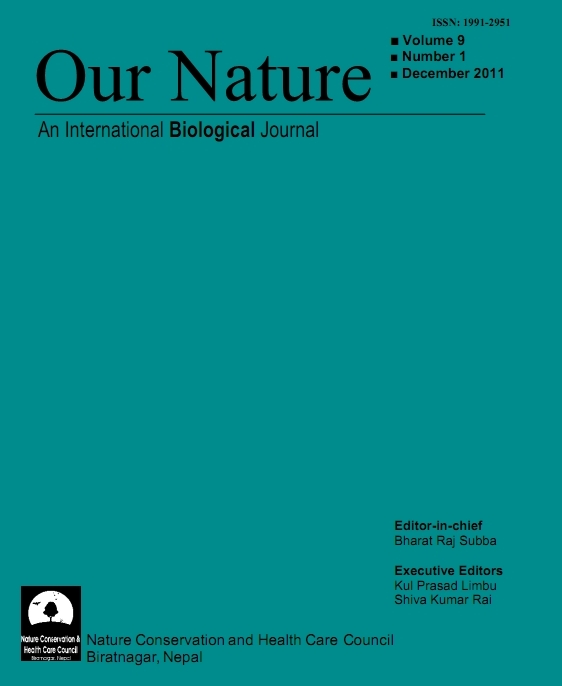Role of Zinc, Copper and Manganese Concentration in Neural Tube Defects
DOI:
https://doi.org/10.3126/on.v9i1.5749Keywords:
Neural tube defects, trace elements, zinc, copper and manganeseAbstract
Trace minerals are required by the body in minute quantities ranging from as little microgram to milligram per day. The trace elements known to be essential for humans and unquestionably associated with deficiency system. Zinc is a component of all cells; it is needed for the growth and repair of tissues and is a cofactor for at least 70 different enzymes (Baumgartner, 1993). There is experimental evidences for zinc deficiency as a teratogenic agent and in humans the high rates of neural tube defects (NTD) in some regions where zinc deficiency is common (Hurley, 1981; Sever, 1989). In animals zinc deficiency has been shown to cause central nervous system defects (Keen and Hurley, 1989). It is well known that there are interactions between zinc and other trace minerals. Normal levels of these and good relation between them are factors conditioning human health (Janicki, 1991). The present study aims at assessing blood, serum zinc, copper and manganese levels and zinc/copper, zinc/manganese ratios of mother and their babies having NTD.
Downloads
Downloads
How to Cite
Issue
Section
License
This license enables reusers to distribute, remix, adapt, and build upon the material in any medium or format for noncommercial purposes only, and only so long as attribution is given to the creator.




